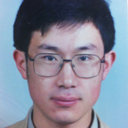Abnormal differentiation of dental pulp cells in cleidocranial dysplasia.
Mots clés
Abstrait
Cleidocranial dysplasia (CCD) is a skeletal dysplasia caused by heterozygous mutations of RUNX2, a gene that is essential for the mineralization of bone and tooth. We isolated primary dental pulp cells from a 10-y-old patient and tested their proliferative capacity, alkaline phosphatase activity, and ability to form mineralized nodules, in comparison with those from 7 healthy children. All these measures were reduced in primary dental pulp cells from the CCD patient. The expression of the osteoblast/odontoblast-associated genes RUNX2, ALP, OCN, and DSPP was also found to be significantly decreased in the primary dental pulp cells of the CCD patient. The osteoclast-related markers TRAP, CTSK, CTR, and MMP9 were decreased in primary dental pulp cells cocultured with human peripheral blood mononuclear cells. Moreover, the expression of RANKL and the ratio of RANKL/OPG were both reduced in the cells from the CCD patient, indicating that the RUNX2 mutation interfered with the bone-remodeling pathway and decreased the capacity of primary dental pulp cells to support osteoclast differentiation. These effects may be partly responsible for the defects in tooth development and the retention of primary teeth that is typical of CCD.



